There is even a fun bit of a boulder scrambling descent in the beginning of the course that requires the use of all four limbs. The Salmon River Mountains have a wild and rugged feel with abundant glistening white granite, which are complemented by rich autumn colors that are usually popping race weekend. Even with a moderate number of stream crossings I was able to keep my feet dry, but to be fair I may enjoy rock hopping more than most. IMTUF 100 is appropriately a qualifier for the Hardrock 100 so expect a rugged mountain run with a variety of trail and weather conditions possible.
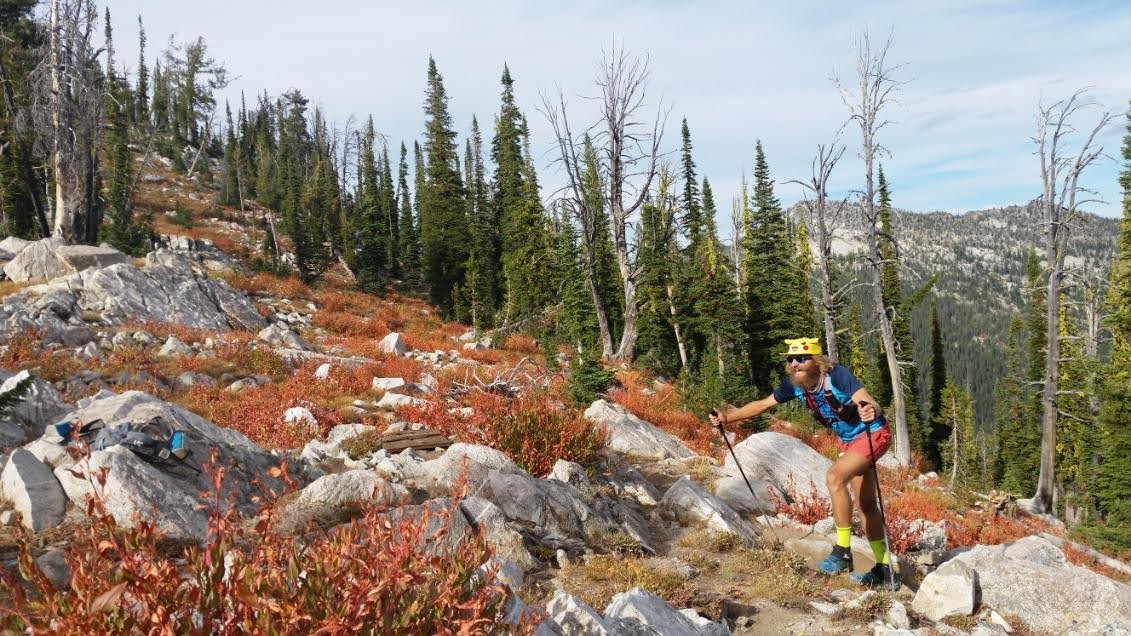
Unknown runner, photo by Jeremy Humphrey
Vibe / Organization
It is fair to say that IMTUF 100 is purely a passion project for race directors Jeremy and Brandi Humphrey. The amount of energy they put into making everything right for runners really might be unparalleled. Jer personally flags the entire course himself—if you get lost at IMTUF 100 either your eyes must be closed or elk ate dozens of flags. The pre-race updates and communication on the race’s Facebook page were meticulously detailed. Even though this is a no-frills event, with a race check-in that took less one minute and forgoed a pre-race meeting, all race and aid-stations volunteers are helpful, kind, and clearly understand the spirit of the event.
Aid Stations / Crew Access
Runners are well supported at all ai- stations, with more or less a standard Rocky Mountain 100-mile cuisine. Think potato chips, M&M’s, quesadillas, ramen, fruit, Coke, etc. One aid-station is literally packed in on the backs of goats, so the menu there is a bit simpler, but an obligatory and delightful photo with the goats is more or less required. Runner’s crews are able to access seven of the ten total aid-stations, with driving between aid-stations reasonable and on adequate mountain dirt roads.
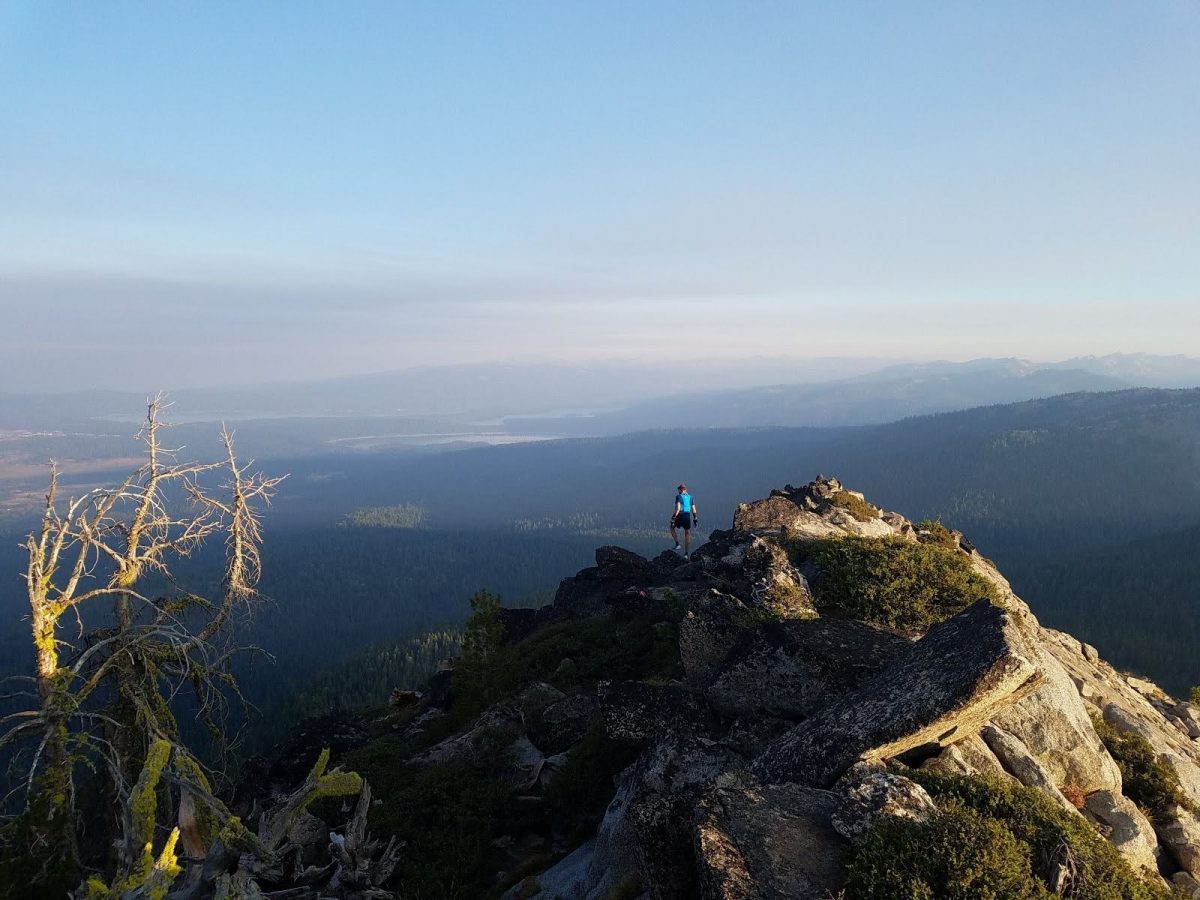
Trevor Fuchs (2020) on Jughandle early in the race, photo by Jeremy Humphrey
Post-Race Scene and McCall
Refreshingly Old School would be one way to describe the post-race scene at IMTUF 100. Classic and eye-catching belt buckles await all finishers, as well as a cotton hoody and homemade soup made by Jer’s own mother. A finely selected six-pack of craft beer is there for winners.
A solid chunk of runners camp at the start/finish, which is at Jug Mountain Ranch (a golf course right at the base of the mountains), but be aware low temperatures will likely be in the 20s or 30s. Many runners choose to stay in McCall, which itself is a charming mountain town, and full of a wide variety of accommodations.
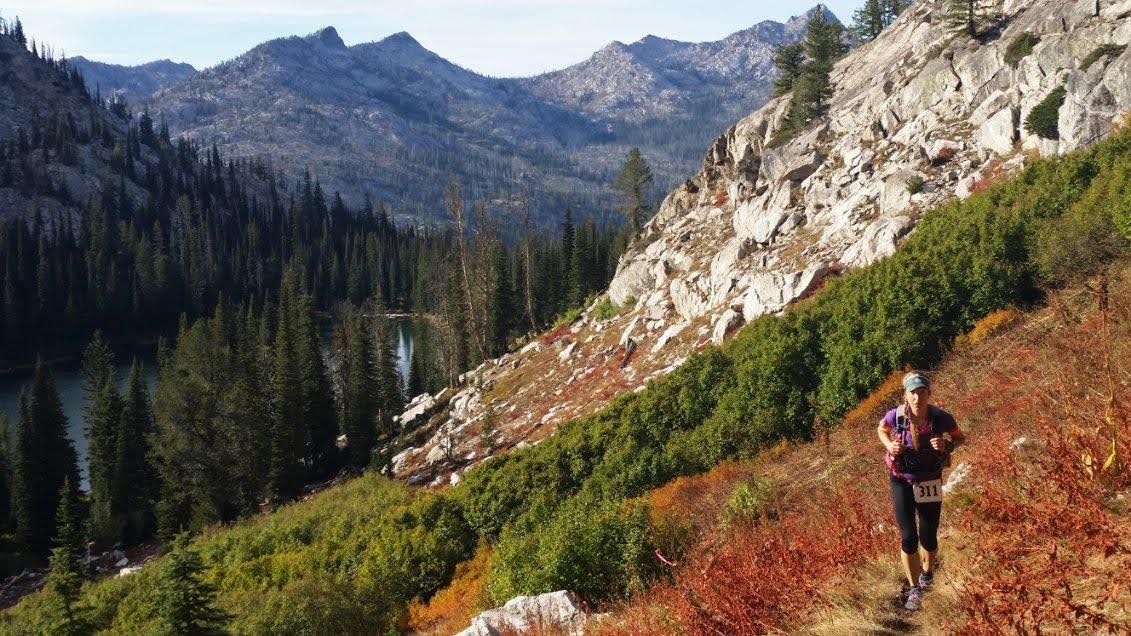
Unknown runner, photo by Jeremy Humphrey
My Race Experience
Like most slightly neurotic runners, I debated for days on what shoes to wear for IMTUF. Shoe selection on this particular course is tricky because of the wide variety of terrain. I started with well cushioned trail shoes with a fairly aggressive rocker, thinking that would help me cruise some of the smoother single track. They worked well at the start, but I did not feel like they were stable enough for the proper rocky mountain running that is strewn throughout the course. I ended up switching to a still well cushioned, but lower to the ground and stable shoe after 50k and would make that change from the start next time.
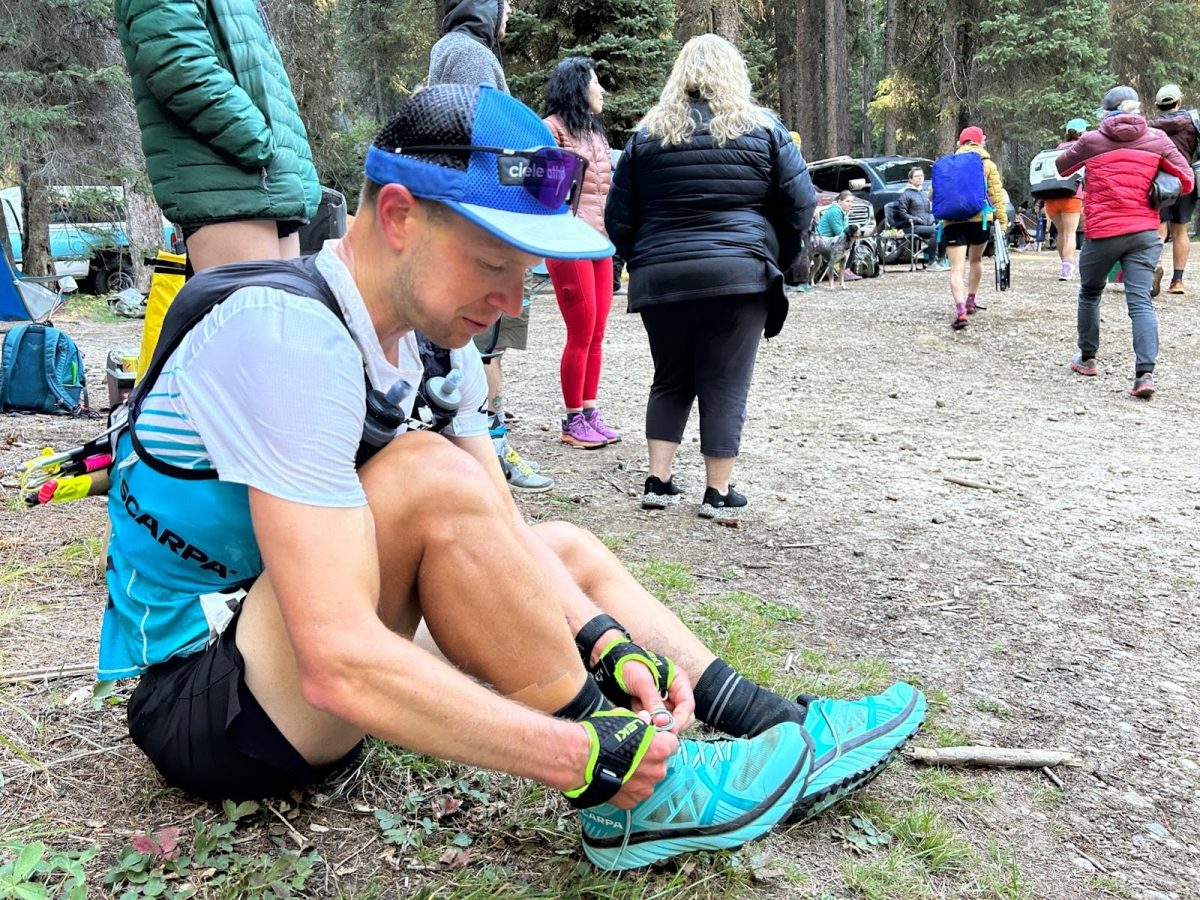
Gabe Joyes (2023) changing to more technically capable shoes at first crewed aid station, photo by Jenny Joyes
I also was unsure about using poles for IMTUF—I typically only use poles on races that are closer to 300 feet per mile (as opposed to IMTUFs 220ish feet per mile). I ended up using poles from the start though, and I am glad I did, as many of the climbs are indeed properly stee. I did stow my poles for long sections of gradual climbing and smooth running, but once again the rocky and technical nature of the course made poles useful enough to carry for the entire course.
Lastly, I carried my typical two soft flasks for the race (17 oz. each), but if I could do it again I would carry an extra soft flask, especially for the warmth of the afternoon. It was on the warmer side when I raced, but regardless the distance between some of the afternoon aid stations was really pushing two soft flasks. Carrying an extra one would be prudent for any runner to help avoid digging a nasty dehydration hole.
Final Thoughts
I signed up for IMTUF 100 at nearly the last possible moment, snagging one of the final spots in the race. Originally I was slated to run one of the UTMB World Series races in Chamonix, but something about that did not feel quite right this year. Fortunately I was able to pivot to IMTUF, and it was what I would describe as one of the most down-to-earth and grass roots 100-mile races on the planet. Trail running is undoubtedly evolving, and with all the commotion about the sport losing its soul, I take heart knowing that races like IMTUF exist because it epitomizes the soul and feeling of authentic trail running. IMTUF is especially appealing because of its status as a Hardrock Qualifier, but without a doubt it is completely worthwhile event in its own right.
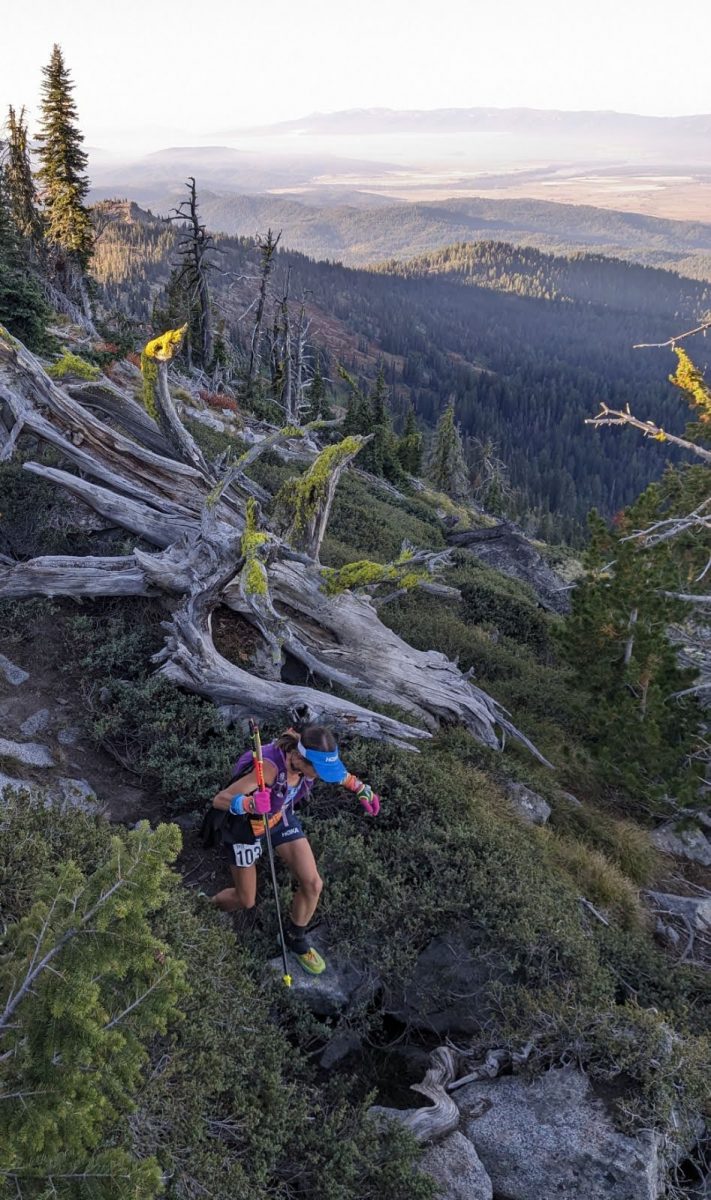
Kaci Lickteig (2023) coming off of Jughandle, photo by Jeremy Humphrey
Interested in signing up for the IMTUF 100? Learn more about the race on the IMTUF 100 Website.
Gabe’s Strava Data From IMTUF
Follow Gabe on Instagram
Follow Trails & Tarmac on Instagram
Learn More About our Coaching





